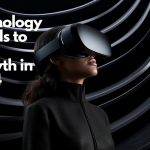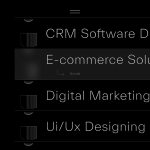
How UX Design Can Satisfy Users and Business Goals ?
In the ever-evolving world of digital products, the pressure is on. Users demand seamless, intuitive experiences, while businesses crave conversion rates and brand loyalty. Can UX design really bridge this gap? Can it deliver experiences that make users sing with delight while simultaneously making the cash register jingle?
Absolutely! But it’s not magic, it’s strategic design thinking. Think of it as a tightrope walk, where you balance the needs of both users and the business with grace and precision. Here are some key steps to ensure your UX design hits the sweet spot:
1. Deep Dive into User Needs:
First things first, ditch the spotlight and step into your users’ shoes. What makes them tick? What keeps them up at night (besides your confusing interface)? User research is your compass, guiding you through the labyrinth of their desires and pain points. Conduct interviews, observe user behavior, and gather feedback through surveys and A/B testing. This user-centric approach ensures your design resonates with the people who matter most.
2. Business Goals: Don’t Leave Them Hanging:
But hold on, the story doesn’t end with users. Unravel the business’s aspirations. Are they chasing conversion rates like a cheetah after a gazelle? Or is building brand loyalty their Everest? Aligning these goals with user needs is the magic trick that transforms a bland product into a user-centric masterpiece. Remember, happy users often translate to happy businesses.
3. Prioritization: The Art of Saying No:
Trying to please everyone gets you nowhere fast in UX. Master the art of prioritization. Identify the MVPs (most valuable priorities) for both users and the business. Is that fancy new animation really worth sacrificing a faster checkout process? Sometimes, a streamlined, laser-focused design that tackles core needs beats a feature-laden behemoth any day.
4. Collaboration: The Design Orchestra:
Silence the solo act and cue the symphony! Foster a culture of collaboration. Designers, developers, and stakeholders join forces in this UX orchestra, each part crucial to the harmonious melody. User feedback, gleaned through testing and prototyping, becomes the conductor’s baton, constantly refining the design and keeping everyone in tune. Remember, great design is rarely born in a vacuum.
5. Data: The UX Microscope:
Gut feelings are great, but data is the microscope that reveals the true picture. Measure the impact of design decisions with analytics and user testing. Did that revamped onboarding process reduce user frustration, or did it turn into a labyrinth of confusion? Data tells the story, guiding you towards optimal solutions that delight users and fuel business growth.
6. Ethics: The Moral High Ground:
Finally, remember that UX design is not a game of smoke and mirrors. Ethics are the North Star that guides your every step. Prioritizing user needs doesn’t mean sacrificing business goals, but it does mean earning user trust and satisfaction. Avoid manipulative tactics or dark patterns that might boost conversions in the short term but leave users feeling betrayed and abandoned.
Finding the UX Sweet Spot:
Balancing user needs and business goals is an ongoing tango, a dance of give and take, a constant quest for the perfect equilibrium. By embracing these strategies, you can design products that are not just successful, they’re meaningful. You can create experiences that users rave about, while simultaneously propelling businesses to new heights.
Beyond the Divide: Collaboration and Iteration
Remember, UX design is an ongoing journey, not a static destination. Foster a culture of collaboration between designers, developers, and business stakeholders. Encourage continuous iteration based on user feedback and data insights. By continuously refining the bridge, we ensure it remains sturdy and adaptable, accommodating the ever-evolving needs of both users and the business.
Ultimately, optimizing UX for user delight and business success is not about finding a compromise, but about forging a powerful synergy. By understanding the needs of both sides, employing data-driven design principles, and embracing a culture of continuous improvement, we can build bridges that not only connect users and businesses, but also create a landscape of mutual success. Let’s keep the conversation going, sharing best practices and building bridges that span the digital divide, one delightful experience at a time.
Leave A Comment
Search
Recent Post

Top 8 Technology Trends to Drive Growth in 2024
16 April. 2024

Reports on Autopilot: Can GA4 Really Be This Easy?
5 March. 2024

Web3 and the Metaverse: A New Era for the Internet?
27 February. 2024

How AI is Reshaping Search Engine Optimization?
22 February. 2024

Is GEMINI the Next Game-Changer for Your Business?
20 February. 2024

5 Digital Marketing Trends You Need to Know in 2024
16 February. 2024

Is Your Website Talking Back? Dominate Voice Search with These 3 Hacks!
13 February. 2024

Unexpected Ways Apple Vision Pro Will Change India: Beyond the Hype
8 February. 2024

How UX Design Can Satisfy Users and Business Goals ?






















